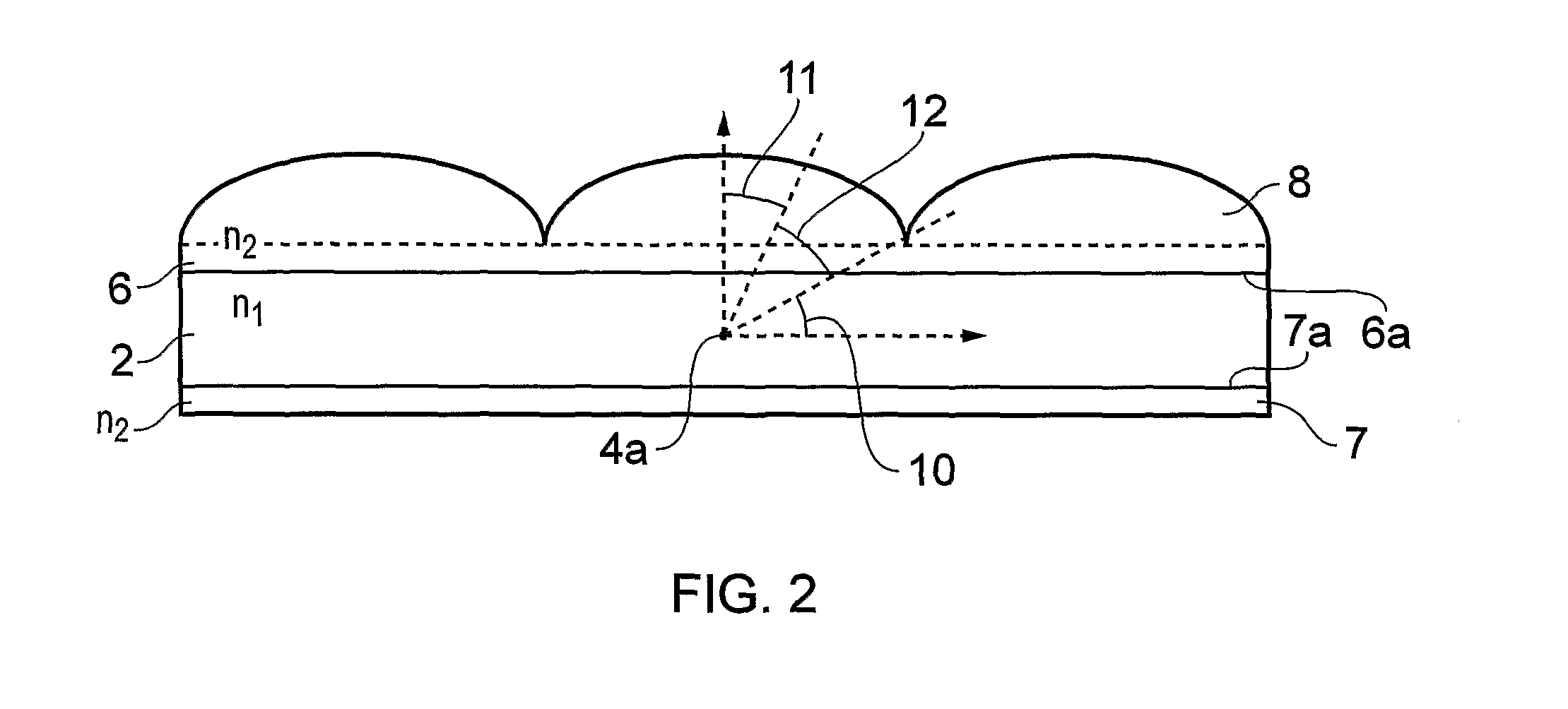Light guide device
a technology of light guide and guide rod, which is applied in the direction of lasers, beacon systems, cosmonautic components, etc., can solve the problems of not always providing as much control over the range of output angles, and achieve the effect of reducing the amount of input light required, and improving optical coupling efficiency
- Summary
- Abstract
- Description
- Claims
- Application Information
AI Technical Summary
Benefits of technology
Problems solved by technology
Method used
Image
Examples
example 1
[0044]A regular dot pattern (scattering features) was printed onto a PMMA sheet (core light guide layer) using screen printing ink impregnated with TiO2 particles. Cladding layers made from FEP were laminated onto either side of the core using a pressure sensitive adhesive. Along the exposed main surface of one of the cladding layers, an aluminium coated FEP layer was attached (reflector layer), also using pressure sensitive adhesive. On the exposed main surface of the other cladding layer, an array of individual injection-moulded, hemispherical polystyrene microlenses was attached directly above and in line with the scattering features using a uv-curing adhesive. The device was illuminated from the side.
[0045]A calculation was performed using Zemax ray tracing software on two systems (a) n1=n3=1.5 and n2=1.3 and (b, comparative) n2=n3=1.3 and n1=1.5. The difference in output distributions is shown in FIG. 5. The distribution of light for the arrangement according to the present inv...
PUM
 Login to View More
Login to View More Abstract
Description
Claims
Application Information
 Login to View More
Login to View More - R&D
- Intellectual Property
- Life Sciences
- Materials
- Tech Scout
- Unparalleled Data Quality
- Higher Quality Content
- 60% Fewer Hallucinations
Browse by: Latest US Patents, China's latest patents, Technical Efficacy Thesaurus, Application Domain, Technology Topic, Popular Technical Reports.
© 2025 PatSnap. All rights reserved.Legal|Privacy policy|Modern Slavery Act Transparency Statement|Sitemap|About US| Contact US: help@patsnap.com



